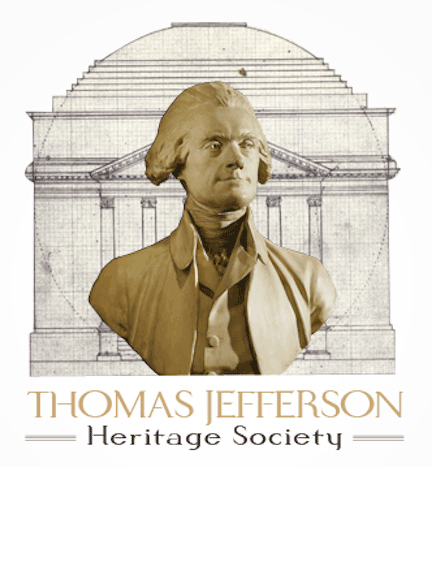The Road to Monticello: The Life and Mind of Thomas Jefferson
by Kevin J. Hayes
Reviewed by Richard Dixon
If you are unfamiliar with the basic details of the life of Thomas Jefferson, this should not be your first book. It is better that you read a biography first, such as Merrill Peterson’s Thomas Jefferson and the New Nation, or Willard Sterne Randall’s Thomas Jefferson. Kevin Hayes is a professor of English at the University of Central Oklahoma and his interest is literature. He has produced what might be called a biography of Jefferson’s “literary” life. It is a large book, almost 650 pages in length, with voluminous notes showing the prodigious research.
Beginning with the young Jefferson, Hayes examines the books Jefferson bought, recommended, collected and read, to the end of his life, when he was stocking the new University of Virginia library. Along the way, Jefferson developed his writing style, each word carefully chosen, with precise attention to its sound, and his message embellished by metaphor. We know about the sixteen thousand letters that Jefferson wrote, and the mind wonders how he found time to read.
Prof. Hayes follows a unique methodology in developing the literary Jefferson. He reviewed the marginal notes made by Jefferson in the books that survived the fire in the library that he donated to the Library of Congress in 1815. This is only a small number of all the books Jefferson accumulated during his life. Left unexamined would be the Shadwell library that burned in 1770, his Annapolis library sold to James Monroe, his vacation library at Poplar Forest, or the books accumulated at Monticello after his retirement from the presidency.
All of this reveals a mind almost without a limit in its ability to absorb information. Literature, history, science, geography, mathematics, whatever the discipline or activity, Jefferson read it. This includes other languages, Italian, French, Greek and Latin. Jefferson even enjoyed fiction and poetry. He loved metaphors, used them constantly in his own writing to impart meaning not always apparent in dry historical accounts.
Jefferson recounted that he wrote the Declaration of Independence without reference to “neither book or pamphlet,” the phrasing and the details on the origin of governmental power born from his reading. Hayes also discusses Jefferson’s preparation of the Notes on the State of Virginia, and Jefferson’s note-taking that led to compilation of the Anas.
Hayes traces Jefferson’s life by books, bought and read, sold and given away. Jefferson apparently had a seamless ability to move between works of literature, law, a different language, or the latest techniques of agriculture. It was a world of the mind, moving in rhythm to the real world, where Jefferson met the demands of his plantation or his political life.
This is a different approach to Jefferson. It is one that will provide information not found in traditional accounts of Jefferson’s life. The methodology of this biography will welcome and entertain readers who love reading about other book lovers.
